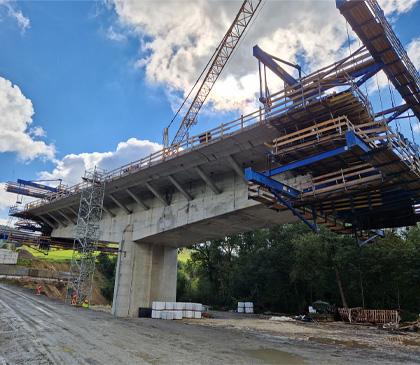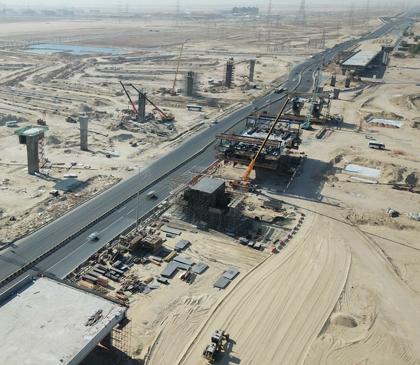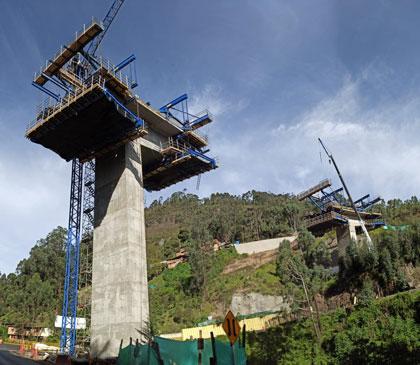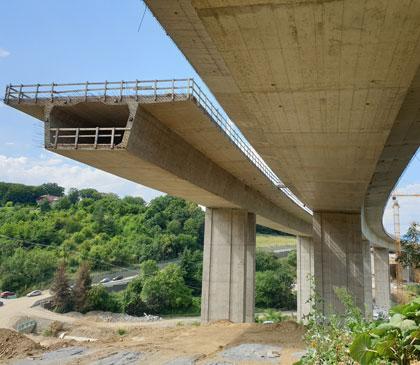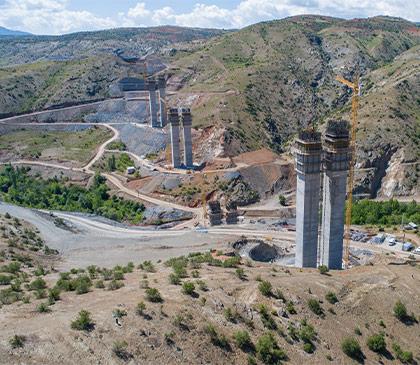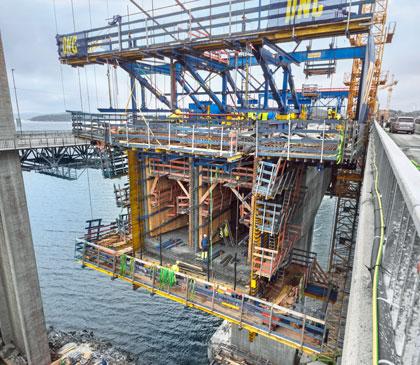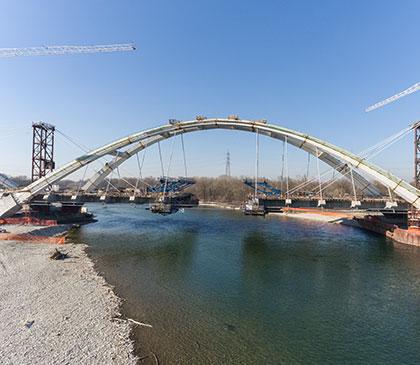Balanced Cantilevered Bridges
Bridging wide spans with the balance beam principle

In the free cantilever method of construction the prestressed-concrete superstructure, generally boxlike in section, is cast section by section. Two cantilever arms are built in opposing directions, extending away from the pier head (or 'hammerhead' as it is often termed). In order to ensure that this 'balance beam' does not topple off the head of the bridge pier, the superstructure is connected to the pier in such a way as to remain flexurally rigid, or it is held by temporary supports or temporary piers until the through-beam supporting effect of the superstructure is established by what is known as gap closure. Even though the connection through to the pier is flexurally rigid, the two extensions have to be kept within a precisely defined maximum load delta. Consequently, there can be no more than a minor difference in the lengths and weights of the two cantilever arms.
Highlights:
- spans up to 300 m can be bridged efficiently with conventional cantilevered construction
- used for wide spans (valley, river, sea, nature conservation area, etc.)
- nothing to obstruct traffic (road, rail, shipping) underneath the structure
- the pier head is the starting segment for the pair of cantilever forming travellers and it also absorbs the enormous support moments and loads deltas during construction
- generally a one-week cycle for casting and prestressing each pair of segments
- defined work cycle: process-oriented completion of the sections for high efficiency and quality
Pier head
- starting segment for the cantilever forming travellers
- constructed using load-bearing tower, timberbeam formwork and framed formwork systems
- extensive safety features for safe working conditions
Gap closure
The closing cycle has to go smoothly, but it is also very important to plan the disassembly or retraction of the cantilever forming travellers.
Optimised interface between Doka and structural engineer
As regards planning the anchor holes for the cantilever forming traveller, close coordination with the structural engineers is essential in order to avoid collisions with the bridge's tensioning-cable system. This method of construction involves relatively large deformations, so super-elevation has to be calculated accurately and conditions checked and adapted after every pouring operation. Doka supplies the structural engineer with the data on system deformations for each cycle.
Formwork Systems & Services
Get in touch
The international experience of Doka gives you pooled, concentrated knowledge for a successful project. Your contact person will help you find the best individual solution, to make your project's 'bottom line' a success, too. In short: expert specialised formwork planning with lasting benefits for your bridge construction project.






